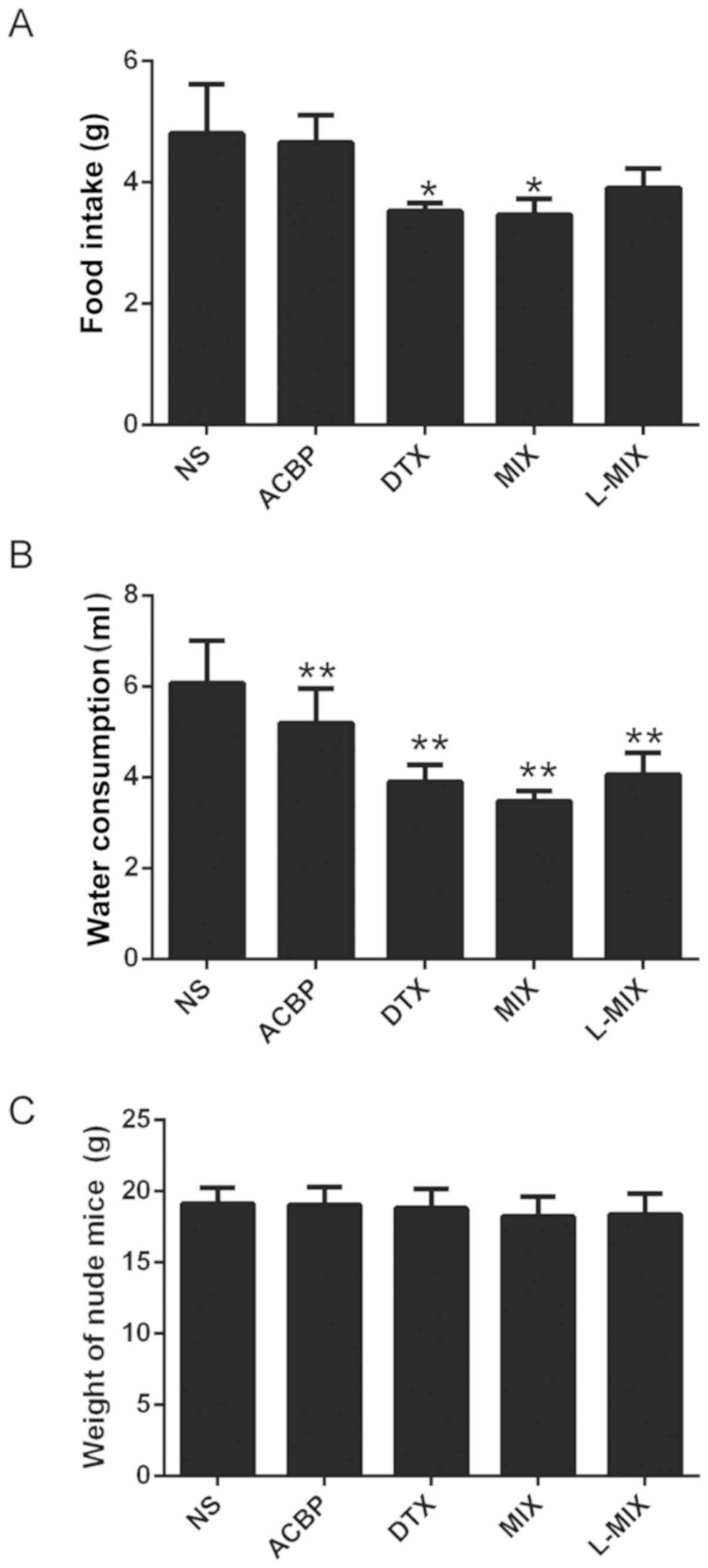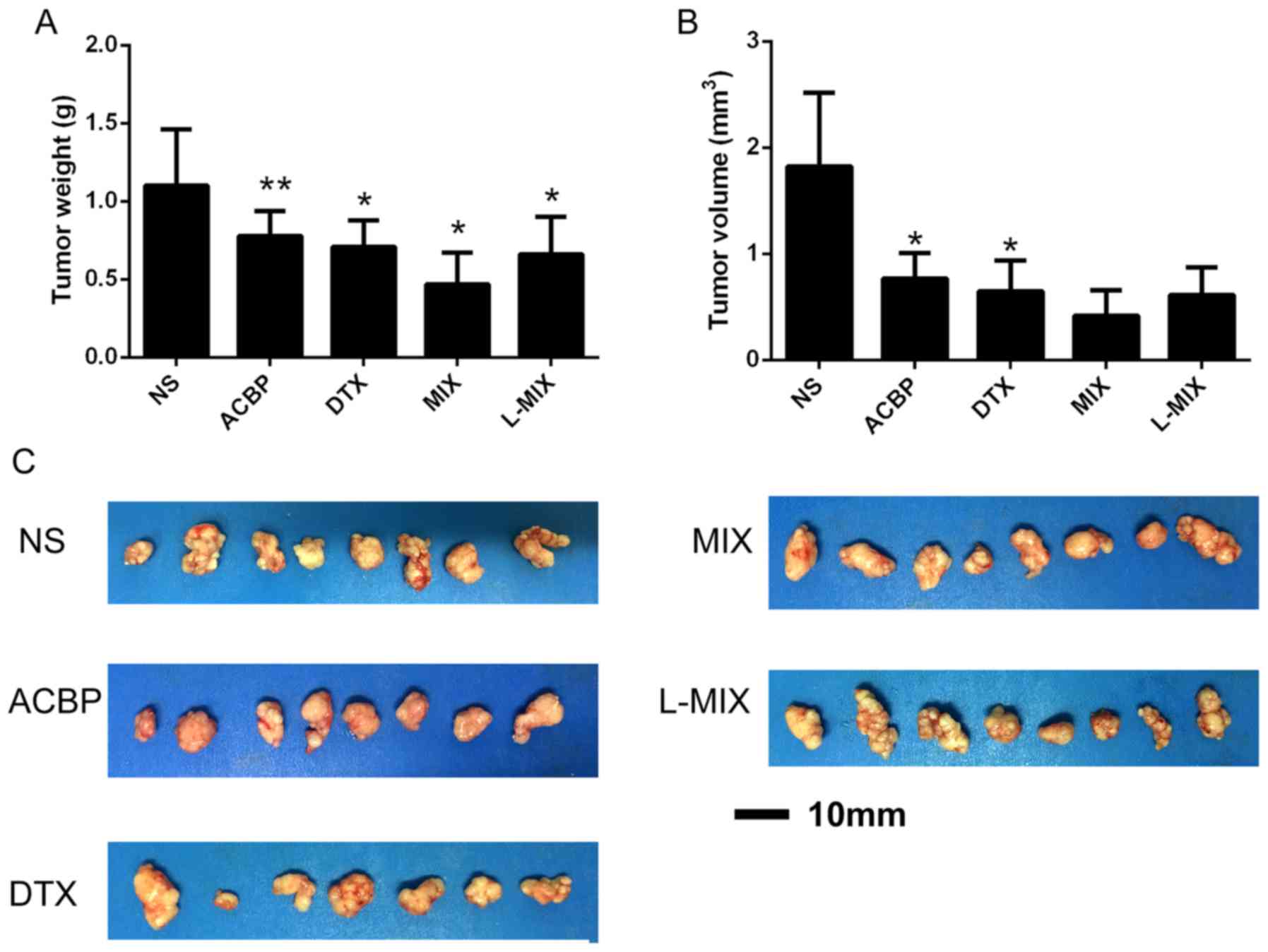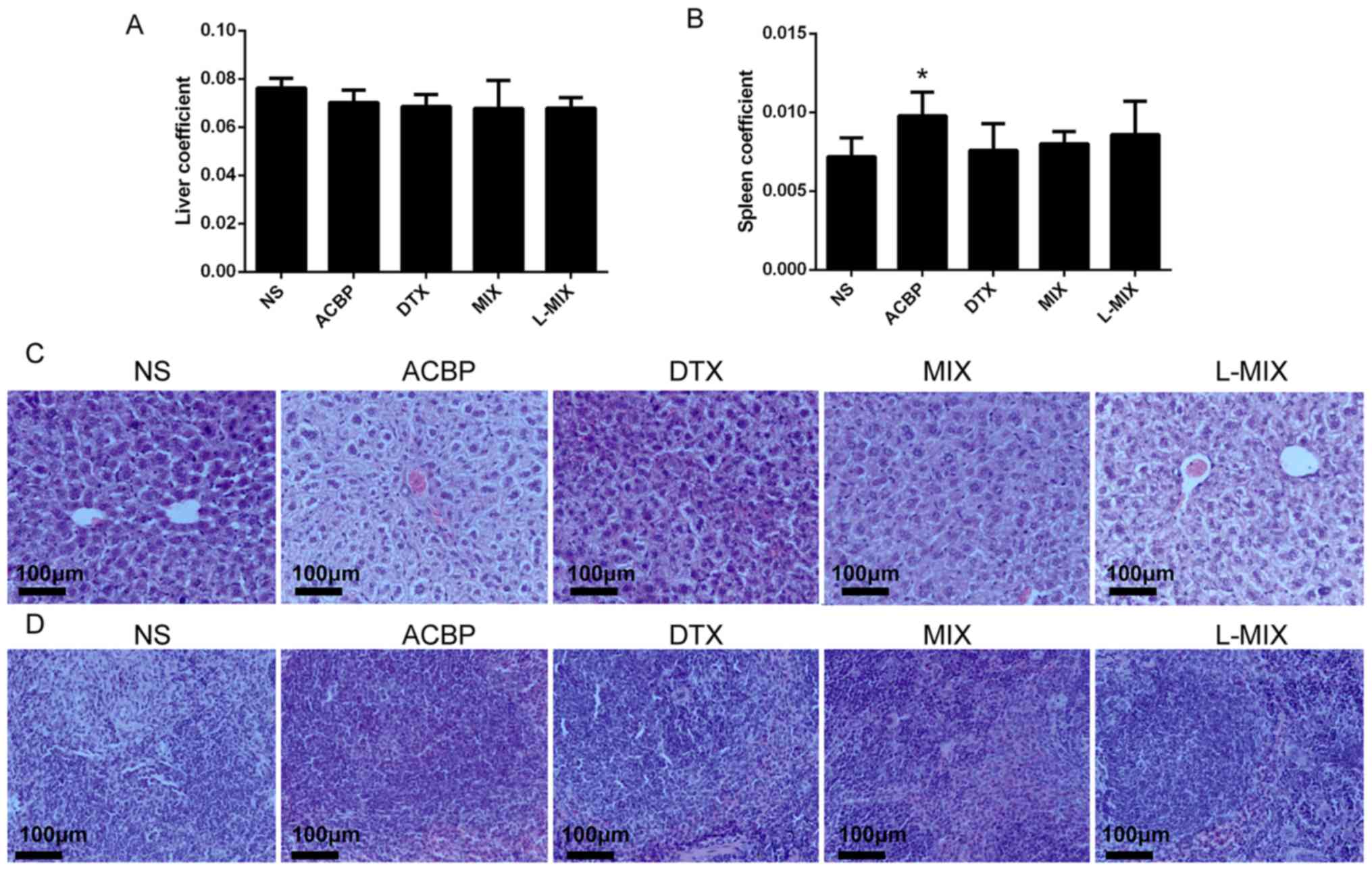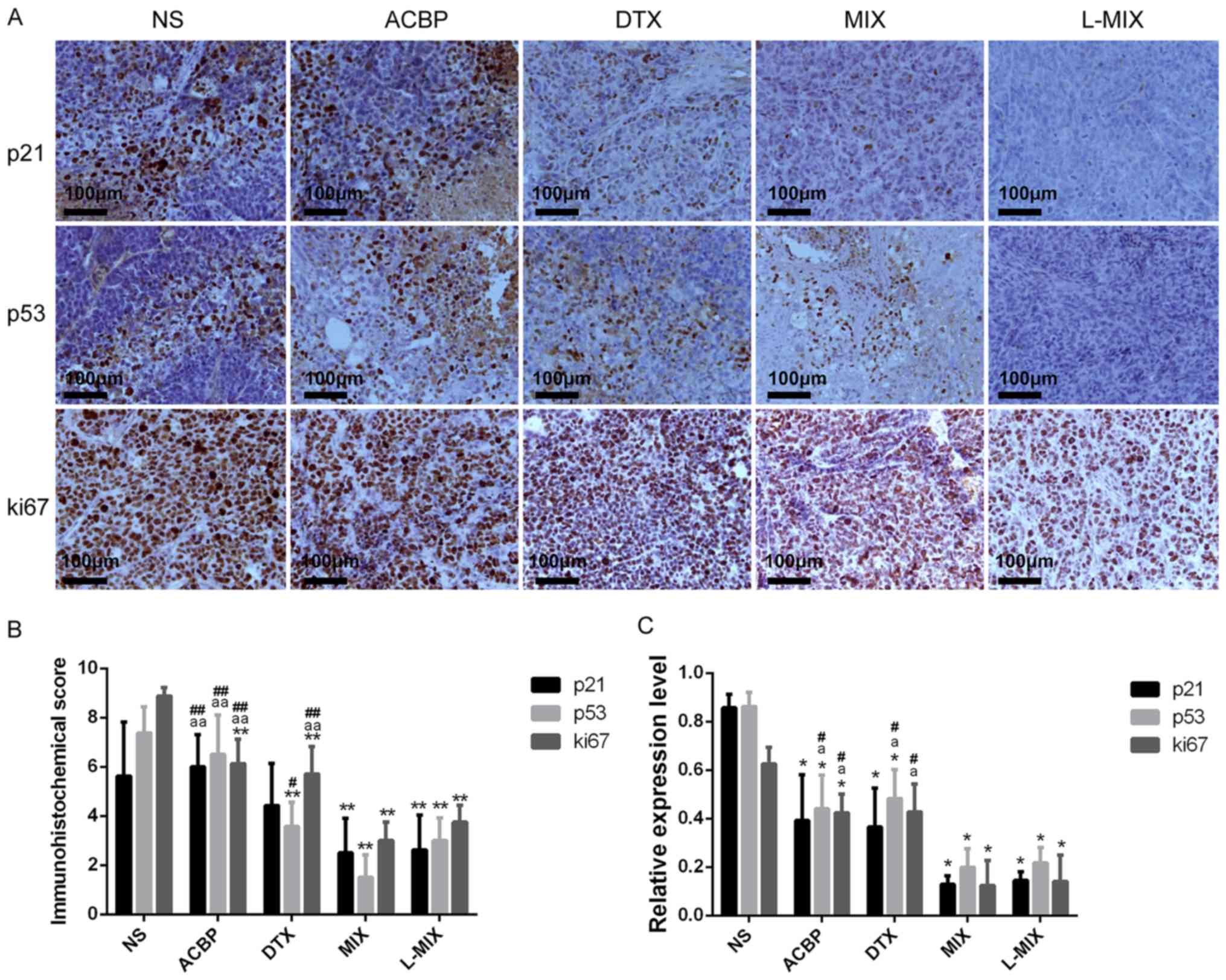|
1
|
Song CG, Hu Z, Wu J, Luo JM, Shen ZZ,
Huang W and Shao ZM: The prevalence of BRCA1 and BRCA2 mutations in
eastern Chinese women with breast cancer. J Cancer Res Clin Oncol.
132:617–626. 2006.PubMed/NCBI View Article : Google Scholar
|
|
2
|
Schild SE and Vokes EE: Pathways to
improving combined modality therapy for stage III nonsmall-cell
lung cancer. Ann Oncol. 27:590–599. 2016.PubMed/NCBI View Article : Google Scholar
|
|
3
|
Ye H, Xu HL, Shen Q, Zheng Q and Chen P:
Palliative resection of primary tumor in metastatic nonfunctioning
pancreatic neuroendocrine tumors. J Surg Res. 243:578–587.
2019.PubMed/NCBI View Article : Google Scholar
|
|
4
|
Ghafoor A, Jemal A, Ward E, Cokkinides V,
Smith R and Thun M: Trends in breast cancer by race and ethnicity.
Ca Cancer J Clin. 53:342–355. 2003.PubMed/NCBI View Article : Google Scholar
|
|
5
|
Feng RM, Zong YN, Cao SM and Xu RH:
Current cancer situation in China: Good or bad news from the 2018
global cancer statistics? Cancer Commun (Lond).
39(22)2019.PubMed/NCBI View Article : Google Scholar
|
|
6
|
Culakova E, Thota R, Poniewierski MS,
Kuderer NM, Wogu AF, Dale DC, Crawford J and Lyman GH: Patterns of
chemotherapy-associated toxicity and supportive care in US oncology
practice: A nationwide prospective cohort study. Cancer Med.
3:434–444. 2014.PubMed/NCBI View
Article : Google Scholar
|
|
7
|
Verbelen H, Tjalma W, Meirte J and
Gebruers N: Long-term morbidity after a negative sentinel node in
breast cancer patients. Eur J Cancer Care (Engl).
28(e13077)2019.PubMed/NCBI View Article : Google Scholar
|
|
8
|
Le DL, Cao H and Yang LX: Cardiotoxicity
of molecular-targeted drug therapy. Anticancer Res. 34:3243–3249.
2014.PubMed/NCBI
|
|
9
|
Feng QJ, Zhang F, Huang XY and Wu ZX:
Effectiveness and complications of anthracycline and taxane in the
therapy of breast cancer: A meta-analysis. Pathol Oncol Res.
20:179–184. 2014.PubMed/NCBI View Article : Google Scholar
|
|
10
|
Rivera E and Cianfrocca M: Overview of
neuropathy associated with taxanes for the treatment of metastatic
breast cancer. Cancer Chemother Pharmacol. 75:659–670.
2015.PubMed/NCBI View Article : Google Scholar
|
|
11
|
Andreopoulou E and Sparano JA:
Chemotherapy in patients with anthracycline- and taxane-pretreated
metastatic breast cancer: An overview. Curr Breast Cancer Rep.
5:42–50. 2013.PubMed/NCBI View Article : Google Scholar
|
|
12
|
Kayl AE and Meyers CA: Side-effects of
chemotherapy and quality of life in ovarian and breast cancer
patients. Curr Opin Obstet Gynecol. 18:24–28. 2006.PubMed/NCBI View Article : Google Scholar
|
|
13
|
Yavari B, Mahjub R, Saidijam M, Raigani M
and Soleimani M: The potential use of peptides in cancer treatment.
Curr Protein Pept Sci. 19:759–770. 2018.PubMed/NCBI View Article : Google Scholar
|
|
14
|
Albenzio M, Santillo A, Caroprese M, Della
Malva A and Marino R: Bioactive peptides in animal food products.
Foods. 6(E35)2017.PubMed/NCBI View Article : Google Scholar
|
|
15
|
Bhat ZF, Kumar S and Bhat HF:
Antihypertensive peptides of animal origin: A review. Crit Rev Food
Sci Nutr. 57:566–578. 2017.PubMed/NCBI View Article : Google Scholar
|
|
16
|
Cicero AFG, Fogacci F and Colletti A:
Potential role of bioactive peptides in prevention and treatment of
chronic diseases: A narrative review. Br J Pharmacol.
174:1378–1394. 2017.PubMed/NCBI View Article : Google Scholar
|
|
17
|
Hilchie AL, Hoskin DW and Power Coombs MR:
Anticancer activities of natural and synthetic peptides. Adv Exp
Med Biol. 1117:131–147. 2019.PubMed/NCBI View Article : Google Scholar
|
|
18
|
Xing Z, Yu L, Li X and Su X: Anticancer
bioactive peptide-3 inhibits human gastric cancer growth by
targeting miR-338-5p. Cell Biosci. 6(53)2016.PubMed/NCBI View Article : Google Scholar
|
|
19
|
Su X, Dong C, Zhang J, Su L, Wang X, Cui H
and Chen Z: Combination therapy of anti-cancer bioactive peptide
with cisplatin decreases chemotherapy dosing and toxicity to
improve the quality of life in xenograft nude mice bearing human
gastric cancer. Cell Biosci. 4(7)2014.PubMed/NCBI View Article : Google Scholar
|
|
20
|
Li X, Xia L, Ouyang X, Suyila Q, Su L and
Su X: Bioactive peptides sensitize cells to anticancer effects of
oxaliplatin in human colorectal cancer xenografts in nude mice.
Protein Pept Lett. 26:512–522. 2019.PubMed/NCBI View Article : Google Scholar
|
|
21
|
Ma J, Hu X, Li J, Wu D, Lan Q, Wang Q,
Tian S and Dong W: Enhancing conventional chemotherapy drug
cisplatin-induced anti-tumor effects on human gastric cancer cells
both in vitro and in vivo by thymoquinone targeting PTEN gene.
Oncotarget. 8:85926–85939. 2017.PubMed/NCBI View Article : Google Scholar
|
|
22
|
Yu L, Yang L, An W and Su X: Anticancer
bioactive peptide-3 inhibits human gastric cancer growth by
suppressing gastric cancer stem cells. J Cell Biochem. 115:697–711.
2014.PubMed/NCBI View Article : Google Scholar
|
|
23
|
Zhang S, Guan J, Sun M, Zhang D, Zhang H,
Sun B, Guo W, Lin B, Wang Y, He Z, et al: Self-delivering
prodrug-nanoassemblies fabricated by disulfide bond bridged oleate
prodrug of docetaxel for breast cancer therapy. Drug Deliv.
24:1460–1469. 2017.PubMed/NCBI View Article : Google Scholar
|
|
24
|
Chi CL, Li FW, Liu HB, Feng SY, Zhang YJ,
Zhou D and Zhang RG: Docetaxel-loaded biomimetic nanoparticles for
targeted lung cancer therapy in vivo. J Nanoparticle Res.
21(144)2019.
|
|
25
|
Li C, Wang Z, Wang Q, Ka Yan Ho RL, Huang
Y, Chow MSS, Kei Lam CW and Zuo Z: Enhanced anti-tumor efficacy and
mechanisms associated with docetaxel-piperine combination- in vitro
and in vivo investigation using a taxane-resistant prostate cancer
model. Oncotarget. 9:3338–3352. 2017.PubMed/NCBI View Article : Google Scholar
|
|
26
|
Grover A, Hirani A, Pathak Y and Sutariya
V: Brain-targeted delivery of docetaxel by glutathione-coated
nanoparticles for brain cancer. AAPS PharmSciTech. 15:1562–1568.
2014.PubMed/NCBI View Article : Google Scholar
|
|
27
|
Stacul F, Bertolotto M, De Gobbis F,
Calderan L, Cioffi V, Romano A, Zanconati F and Cova MA: US
colour-Doppler US and fine-needle aspiration biopsy in the
diagnosis of thyroid nodules. Radiol Med. 112:751–762.
2007.PubMed/NCBI View Article : Google Scholar : (In English,
Italian).
|
|
28
|
Livak KJ and Schmittgen TD: Analysis of
relative gene expression data using real-time quantitative PCR and
the 2(-Delta Delta C(T)) method. Methods. 25:402–408.
2001.PubMed/NCBI View Article : Google Scholar
|
|
29
|
Fan L, Strasser-Weippl K, Li JJ, St Louis
J, Finkelstein DM, Yu KD, Chen WQ, Shao ZM and Goss PE: Breast
cancer in China. Lancet Oncol. 15:e279–e289. 2014.PubMed/NCBI View Article : Google Scholar
|
|
30
|
Demichele A, Yee D and Esserman L:
Mechanisms of resistance to neoadjuvant chemotherapy in breast
cancer. N Engl J Med. 377:2287–2289. 2017.PubMed/NCBI View Article : Google Scholar
|
|
31
|
Morarji K, Mcardle O, Hui K, Gingras-Hill
G, Ahmed S, Greenblatt EM, Warner E, Sridhar S, Ali AMF, Azad A and
Hodgson DC: Ovarian function after chemotherapy in young breast
cancer survivors. Curr Oncol. 24:e494–e502. 2017.PubMed/NCBI View Article : Google Scholar
|
|
32
|
Witlox L, Schagen SB, de Ruiter MB,
Geerlings MI, Peeters PHM, Koevoets EW, van der Wall E, Stuiver M,
Sonke G, Velthuis MJ, et al: Effect of physical exercise on
cognitive function and brain measures after chemotherapy in
patients with breast cancer (PAM study): Protocol of a randomised
controlled trial. BMJ Open. 9(e028117)2019.PubMed/NCBI View Article : Google Scholar
|
|
33
|
Gokal K: Effects of physical activity on
cognitive and psychosocial functioning in breast cancer patients
undergoing chemotherapy: A randomised controlled trial (unpublished
PhD thesis). Loughborough University, 2015.
|
|
34
|
Gan X and Wang L: Current situation and
prospect of biotherapy of metastatic renal cell carcinoma. Chin J
Cancer Biother, 2018 (In Chinese).
|
|
35
|
Jia Q, Wang W and Su X: Inhibitory effect
of anticancer bioactive peptides on proliferation of human breast
cancer nm 231 cell. J 270-275, 2007.
|
|
36
|
Xu M, Lu JG and Ma QJ: Research on splenic
nerve and spleen Immune function. Prog Mod Biomed. 10:2177–2179.
2010.
|
|
37
|
Cheang MC, Chia SK, Voduc D, Gao D, Leung
S, Snider J, Watson M, Davies S, Bernard PS, Parker JS, et al: Ki67
index, HER2 status, and prognosis of patients with luminal B breast
cancer. J Natl Cancer Inst. 101:736–750. 2009.PubMed/NCBI View Article : Google Scholar
|
|
38
|
Li Q, Zhu Y, Hou L, Wang J, Hu G, Fang X,
Hu Y, Tao T, Wei X, Tang H, et al: C23 promotes tumorigenesis via
suppressing p53 activity. Oncotarget. 7:58274–58285.
2014.PubMed/NCBI View Article : Google Scholar
|
|
39
|
Bai S, Feng Q, Pan XY, Zou H, Chen HB,
Wang P, Zhou XL, Hong YL, Song SL and Yang JL: Overexpression of
wild-type p21Ras plays a prominent role in colorectal cancer. Int J
Mol Med. 39:861–868. 2017.PubMed/NCBI View Article : Google Scholar
|
|
40
|
Koopman T, Buikema HJ, Hollema H, de Bock
GH and van der Vegt B: Digital image analysis of Ki67 proliferation
index in breast cancer using virtual dual staining on whole tissue
sections: Clinical validation and inter-platform agreement. Breast
Cancer Res Treat. 169:33–42. 2018.PubMed/NCBI View Article : Google Scholar
|
|
41
|
Morrison CD, Allington TM, Thompson CL,
Gilmore HL, Chang JC, Keri RA and Schiemann WP: c-Abl inhibits
breast cancer tumorigenesis through reactivation of p53-mediated
p21 expression. Oncotarget. 7:72777–72794. 2016.PubMed/NCBI View Article : Google Scholar
|
|
42
|
Wang K, Xie SM, He JJ, Ren Y, Xia HB and
Zhang XW: Establishment of a bioluminescent MDA-MB-231 cell line
for in vivo imaging of human triple-negative breast cancer
xenograft. Nan Fang Yi Ke Da Xue Xue Bao. 31:1812–1818.
2011.PubMed/NCBI(In Chinese).
|
|
43
|
Dumay A, Feugeas JP, Wittmer E,
Lehmann-Che J, Bertheau P, Espié M, Plassa LF, Cottu P, Marty M,
André F, et al: Distinct tumor protein p53 mutants in breast
cancers subgroups. Int J Cancer. 132:1227–1231. 2013.PubMed/NCBI View Article : Google Scholar
|
|
44
|
Curtis C, Shah SP, Chin SF, Turashvili G,
Rueda OM, Dunning MJ, Speed D, Lynch AG, Samarajiwa S, Yuan Y, et
al: The genomic and transcriptomic architecture of 2,000 breast
tumours reveals novel subgroups. Nature. 486:346–352.
2012.PubMed/NCBI View Article : Google Scholar
|


















